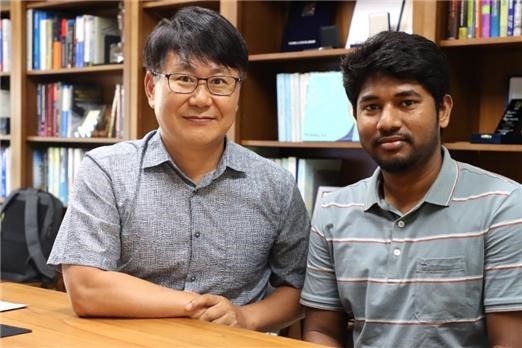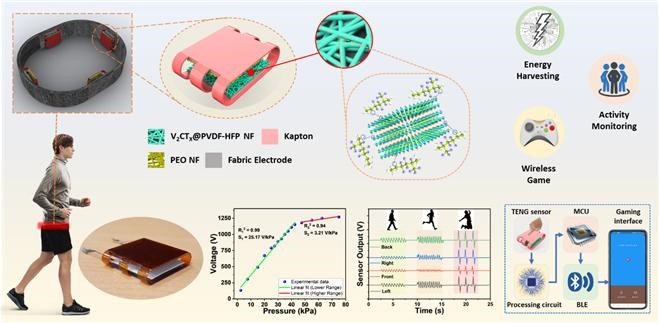Prof. Jae-young Park's Research Team Develops a High-Sensitivity Pressure Sensor
- admin
- 2024-09-13
- 230
· Professor Jae-young Park's Research Team (Department of Electronic Engineering) Develops a High-Sensitivity Pressure Sensor that Operates Without a Battery
- Develops a high-performance nanogenerator based
on vanadium MXene-functionalized composite nanofibers ?
- Develops a battery-free pressure sensor for real-time
monitoring of human activity and posture in wearable devices -
- Paper published in the internationally
renowned journal Nano Energy by Elsevier (IF: 17.6) -
Professor Jae-young
Park's research team (Department of Electronic Engineering) successfully
developed a wearable battery-free sensor that can monitor human activity and
posture in real-time, using a fluoropolymer composite nanofiber material
functionalized with vanadium MXene (V2CTX-MXene), which has high
electronegativity, as well as a breathable, high-performance triboelectric
nanogenerator.

(left)
Professor Jae-young Park and Dr. Omar (right)
Recently, wearable sensors have gained attention as a key technology in
various applications, including electronic skin, robotics, healthcare and
medical systems, and human-machine interfaces. However, the power supply issue
for operating these sensors remains a significant challenge that must be
addressed for their commercialization. As a solution to this issue, research on
eco-friendly, battery-free wearable sensors using triboelectric nanogenerators
to monitor various human activities and biometric information in real-time
without the need for a power supply is actively underway.
The research team successfully developed a V2CTX@poly(vinylidene
fluoride-co-hexafluoropropylene) composite nanofiber mat with high
electronegativity, stability, and flexibility using electrospinning technology,
and significantly enhanced the performance of the triboelectric nanogenerator
using this material. By utilizing the abundant functional groups (-F, -O, and
-OH) on the surface of vanadium MXene, the electronegativity was increased. A
microcapacitor network was formed in the polymer matrix, improving dielectric
properties along with electron trapping capacity, while significantly reducing
charge loss.
The triboelectric nanogenerator, fabricated by combining the nanofiber mat
of polyethylene oxide (PEO), which has high electropositivity, demonstrated a
high power density of 18.2W/m², which is 3.5 times higher than that of a
nanogenerator based on pure PVDF-HFP nanofibers. The nanogenerator, fabricated
using a nanofiber mat, exhibited excellent breathability, making it highly
wearable and stable. The energy harvested from various human activities
provided enough electricity to power commercial electronic devices such as
stopwatches and thermohygrometers. Additionally, the battery-free wearable
pressure sensor, with a high sensitivity of 25.17 VkPa-1 (1~42 kPa),
was successfully used to demonstrate real-time monitoring of various human
activities and postures, including walking, running, jumping, sitting, and
cycling. The nanogenerator-based battery-free sensor developed by the research
team is expected to be widely utilized and applied in electronic skin,
robotics, human-machine interfaces, and various wearable medical and healthcare
devices.
This research was funded by the government (Ministry of Science and ICT)
through the National Research Foundation of Korea's support for mid-career
researchers (NRF-2020R1A2C2012820) and the Ministry of Trade, Industry, and
Energy's Industrial Technology Innovation Program (RS-2022-00154983,
Development of Autonomous Power Sensor Platform for Low-Power Sensors and
Actuation). The research results were published in Nano Energy (IF: 17.6), one
of the world's leading journals in energy materials and devices by Elsevier. https://doi.org/10.1016/j.nanoen.2024.109787

<Key performance of the triboelectric nanogenerator
and battery-free pressure sensor based on vanadium MXene-functionalized
fluoropolymer composite nanofiber mat, and examples of self-powered human
activity and posture monitoring applications>
?